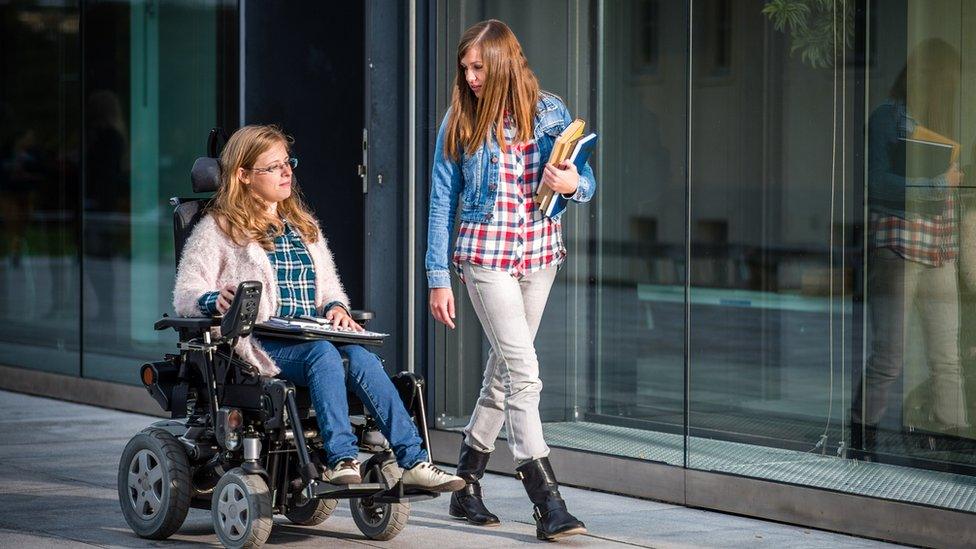Tory leadership: How much has social care been cut?
- Published

Speaking during a live BBC debate, Jeremy Hunt - one of the candidates to replace Theresa May as Conservative Party leader and prime minister - said: "I think, having been responsible for health and social care, that some of the cuts in social care did go too far."
Social care is the day-to-day support given to people who need extra help because of old age or disability or other health condition.
That can be help at home with things like washing and dressing, taking medication and getting around, or full-time accommodation in a care home.
In the UK, publicly funded social care is mainly paid for by local councils, not the NHS.
In 2017-18, local authorities in England spent £21.3bn on social care, down from £22bn in 2010-11.
This formed part of wider cuts to spending in the aftermath of the 2008 recession.
Social care is a devolved matter so, as Health Secretary from 2012-2018, Mr Hunt was responsible only for England's care system.
Unlike the NHS, in England social care is not universally free - it's means-tested. So while we're talking about state-funded services here, a lot of people have to pay for at least some of their care.
Since 2010, the overall grants councils in England receive from central government have been cut by about half, and their overall spending power - once they've topped up their budgets from local taxes and charges for things like parking - by just under a third.
Spending on adult social care fell by about 10% between 2010 and 2013.
It has since has crept back up again, following the introduction of the social care precept - a council tax rise which is ring-fenced to be spent on care, bringing the overall cut since 2010 to 5%.
There has also been more money going to councils' care budgets from the NHS as part of something called the Better Care Fund - a shared budget between the health service and local authorities designed to decrease the number of elderly people staying in hospital unnecessarily due to a lack of care waiting for them at home.
So spending on social care has fallen, but a lot less dramatically than overall council budgets. That's because it comes with lots of legal duties, so the extent to which care budgets can be cut is limited.
As a result, councils have been spending a growing proportion of their budgets on social care for both adults and children.
Local authorities spent 34% of their budget for public services on adult social care in 2009-10. By 2017-18 the average share going on adult social care was 41%.
Last year about 40% of this budget was spent supporting working-age adults, and 60% on elderly care.
While funding has been protected more than for some other services, this comes in the context of growing demand.
We're living longer and more people are living with complex conditions which mean they need some level of support. So even with the same amount of money to spend, councils' budgets are being squeezed. And this demand is forecast to keep growing.
Social care has proved difficult to reform in the past, with report after report leading to little substantive change.


